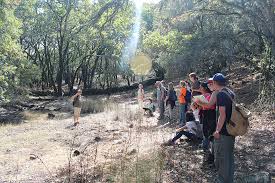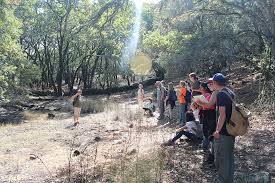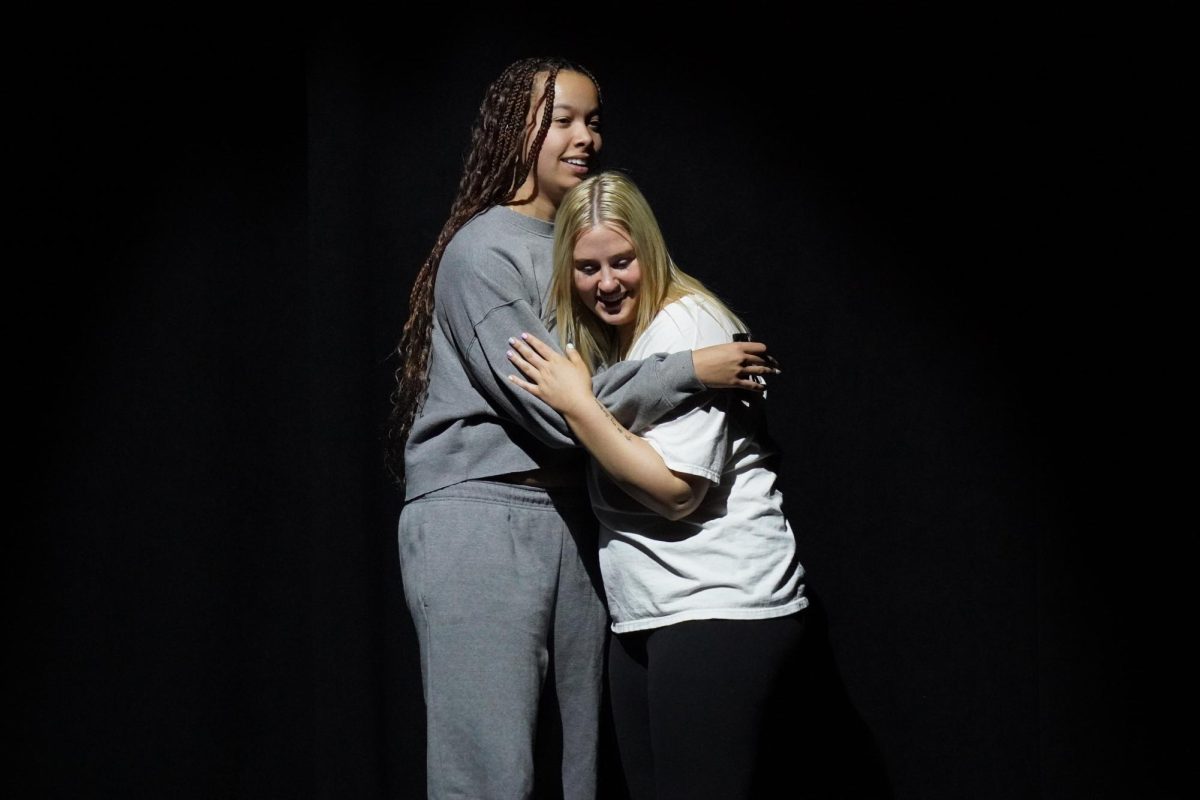Ever visited one of the Sonoma State University preserves? A student experience well worthy of undertaking, the Sonoma County area boasts three university preserves: the Osborn Preserve, Galbreath Preserve, and Los Guilicos Preserve. At the “Dig into Nature” informational meeting held on Wednesday, Sept. 4, led by Suzanne DeCoursey, students explore what the student Naturalist training entails at the Osborn Preserve.
The Osborn Preserve is six miles away from the Sonoma State campus. The Center for Environmental Inquiry created the Naturalist program, which is all about connecting to the natural world with others and being able to teach others about the preserve’s natural inhabitants. In the program, students learn about species, biodiversity, fire ecology, geomorphology, and much more.
“What interested me in this meeting is that I actually have the capability and the opportunity to go to a preserve that this campus owns, and I can learn about so many different species, trees, flowers, animals and other living things–what is literally right among us, which I think is so cool,” says Shayna Hammer, one of the students attending the meeting.
There is profound uniqueness from two different angles within the program. What community partners find unique about the center is the opportunity given to their students. For instance, the K-12 teachers are extremely excited that their students get to interact with college students because it allows for their students to start viewing college as more of a realized opportunity; whereas, before, some of the students had never known anyone who was going to college. Community partners alike certainly find such value rooted in the center. From the students’ point of view, it is an opportunity to receive real, hands-on experience that is otherwise hard to obtain knowledge over from simply learning in a classroom setting.
“I was most interested in the fact that within this program, I get to work with kids and people of all ages and be able to share my knowledge– and to be able to learn more about nature myself, just by exploring and being able to see different types of animals, trees and flowers and all kinds of stuff that makes this world so unique,” says Amber Hukanother, another student attendee.
Whatever a student’s major or intended future career may be, there is something worthy of exploration at the center for all types. If one was to ask employers what they value most in graduates, most of them will not talk about content knowledge; employers talk about foundational skills such as the ability to communicate, ability to work as a team and leadership skills. The programs offered by the center are a premier way to obtain said skillets because, again, such are difficult to acquire inside of a classroom environment. In working as part of a team, or even having to lead a tour, participating students witness first-hand the crossover to a workplace environment and the dynamics therein, with public speaking and leadership development surfacing as inherent aspects of the student experience all the while.
Training for the University’s Naturalist program takes place every semester; the mandatory meetings for the program are at the beginning of the semester as well as at the end, in preparation for the following semester.
As Suzanne DeCoursey, the Education Manager at the Center for Environmental Inquiry, summarizes best, “It is just fun! Students really do need these skills anyway, no matter what your career may be that you are going into. It is great to have these things on your resume,” she continues, “and you might need the credits, so why not get them in a way that’s fun, enjoyable and essentially allowing you to play outside, instead of having to sit in a box of fluorescent light.”





![[Both photos courtesy of sonoma.edu]
Ming-Ting Mike Lee stepped in as the new SSU president following Sakakis resignation in July 2022](https://sonomastatestar.com/wp-content/uploads/2024/04/CC4520AB-22A7-41B2-9F6F-2A2D5F76A28C-1200x1200.jpeg)



























